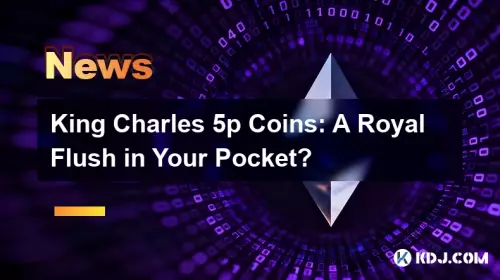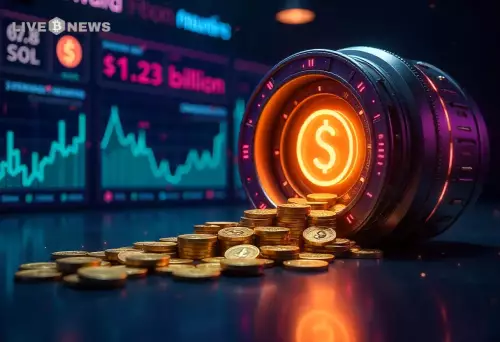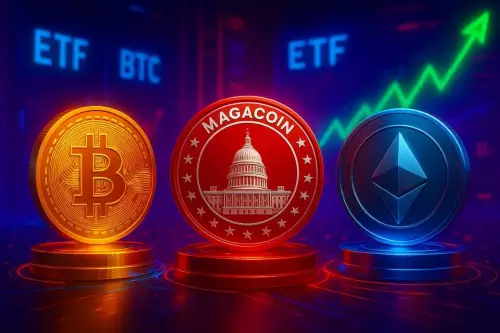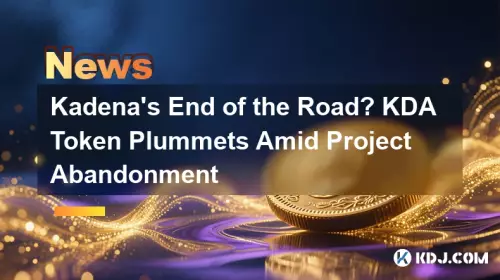 |
|
 |
|
 |
|
 |
|
 |
|
 |
|
 |
|
 |
|
 |
|
 |
|
 |
|
 |
|
 |
|
 |
|
 |
|
Cryptocurrency News Articles
USDe: Examining Risks and Similarities to UST Amid SEC Scrutiny
Apr 05, 2024 at 06:41 am
Ethena's USDe cryptocurrency, pegged to the US dollar, has gained remarkable traction due to its high annual yield of 37.1% and anticipation of an airdrop allocation of its governance token. Its rapid growth and elevated yield have drawn comparisons to Terra's UST stablecoin, which collapsed in 2022. While both USDe and UST are algorithmic stablecoins that maintain their peg without fiat backing, there are notable distinctions in their mechanisms and potential risks. USDe is not fiat-backed like USDT or USDC, but instead maintains stability through delta-neutral trading, where it stakes ETH for long positions and simultaneously opens short futures positions on exchanges. UST relied on a burn-and-mint mechanism, where users traded LUNA tokens for UST to maintain its peg. Despite similarities in yield-generation mechanisms, their different peg methods and Ethena's use of ETH collateral suggest differing risk profiles, with USDe potentially more resilient due to ETH's independent value and liquidity.

Ethena's USDe: Examining the Risks and Similarities with Terra's UST
Since its inception in February, Ethena's USDe, a cryptocurrency designed to maintain a 1:1 peg to the US dollar, has experienced a meteoric rise. Its allure lies in its exceptionally high annual yield—a staggering 37.1% at the time of writing—earned by those who stake it. Additionally, the upcoming airdrop of Ethena's governance token has further fueled the frenzy surrounding USDe.
However, the cryptocurrency's rapid growth, burgeoning market capitalization (recently surpassing $2 billion), and certain aspects of its structure have inevitably drawn comparisons to UST, the infamous algorithmic stablecoin created by Do Kwon and Terraform Labs. Both projects have faced accusations of securities fraud by the SEC, prompting concerns regarding the potential risks associated with USDe.
Similarities and Differences: Delving into the Mechanics
One striking similarity between USDe and UST is their departure from fiat-backed cryptocurrencies like Tether's USDT and Circle's USDC. While the latter two claim to hold corresponding US dollar reserves in bank accounts or Treasury bills, Terra's UST and Ethena's USDe employ different mechanisms to maintain their respective pegs.
Terra's UST relied on an algorithmic, burn-and-mint mechanism for its stability. Essentially, crypto users could mint $1 of UST by burning $1 worth of its sister token, LUNA, and vice versa. Arbitrage opportunities were created whenever UST traded at a discount or premium to the dollar.
In contrast, USDe utilizes a delta-neutral strategy that incorporates "basis trading," a common technique in futures markets within traditional finance. This strategy involves taking simultaneous long and short positions in ETH. Ethena establishes a long position by staking ETH to earn rewards, while opening a short perpetual position for an equivalent dollar value on a derivatives exchange.
In theory, this strategy insulates USDe from ETH price fluctuations. For every dollar that ETH's price drops, the protocol loses $1 on its long position but gains $1 on its short position, maintaining the collateral's USD value relatively stable.
Source of High Yields: A Closer Look
UST's high yields were partially attributed to staking rewards, but in reality, the primary driver was marketing incentives. For USDe, the yields stem from ETH staking rewards and funding rates earned from opening short derivative positions. Given the high leverage currently employed in futures derivatives markets, Ethena's yield has been exceptionally high.
Contrasting Peg Mechanisms and Risks
Despite the evident differences between USDe's peg mechanism and UST's, risks still lurk. Campbell, an adjunct professor at Columbia Business School and former head of portfolio management at Paxos, highlights two potential concerns.
Firstly, a significant divergence between the price of an ETH future and the spot price of ETH could disrupt USDe's basis trade strategy. However, Campbell downplays this risk, citing the liquidity and depth of the ETH futures market.
A more pressing concern, according to Campbell, is the credit risk stemming from the protocols and platforms employed by Ethena for its futures trading. If Ethena were to utilize a protocol that falls victim to a hack or a centralized exchange that faces bankruptcy, the consequences could be dire.
Nonetheless, crypto heavyweights like Hasu, a strategic advisor at Lido, assign less risk to USDe due to the distinction between its peg mechanism and UST's. Hasu emphasizes that the type of trade employed by USDe is relatively common and carries low risk, especially when using a prime broker.
Unwinding USDe vs UST: A Comparative Perspective
In the event that Ethena decides to discontinue USDe, the process of unwinding would be significantly less complex compared to UST. Ethena would retain the dollars to reimburse investors by closing its short perpetual positions and selling ETH.
Conversely, unwinding UST would be far more challenging due to the self-referential relationship between LUNA and UST. Deminting all UST would trigger a chain reaction of LUNA selling, ultimately leading to the collapse of both tokens due to their lack of independent sources of value. USDe, on the other hand, benefits from ETH's independent value.
Conclusion: Assessing the Risks and Potential
While Ethena's USDe shares certain characteristics with Terra's ill-fated UST, it is crucial to acknowledge the fundamental differences between their respective peg mechanisms. USDe's delta-neutral strategy, dependence on ETH's value, and easier unwindability suggest a lower risk profile than UST.
However, it is prudent to remain vigilant of the potential risks associated with USDe, particularly those related to credit risk stemming from its reliance on third-party platforms for futures trading. Investors should carefully consider these factors and conduct thorough due diligence before making any investment decisions.
Disclaimer:info@kdj.com
The information provided is not trading advice. kdj.com does not assume any responsibility for any investments made based on the information provided in this article. Cryptocurrencies are highly volatile and it is highly recommended that you invest with caution after thorough research!
If you believe that the content used on this website infringes your copyright, please contact us immediately (info@kdj.com) and we will delete it promptly.






























































